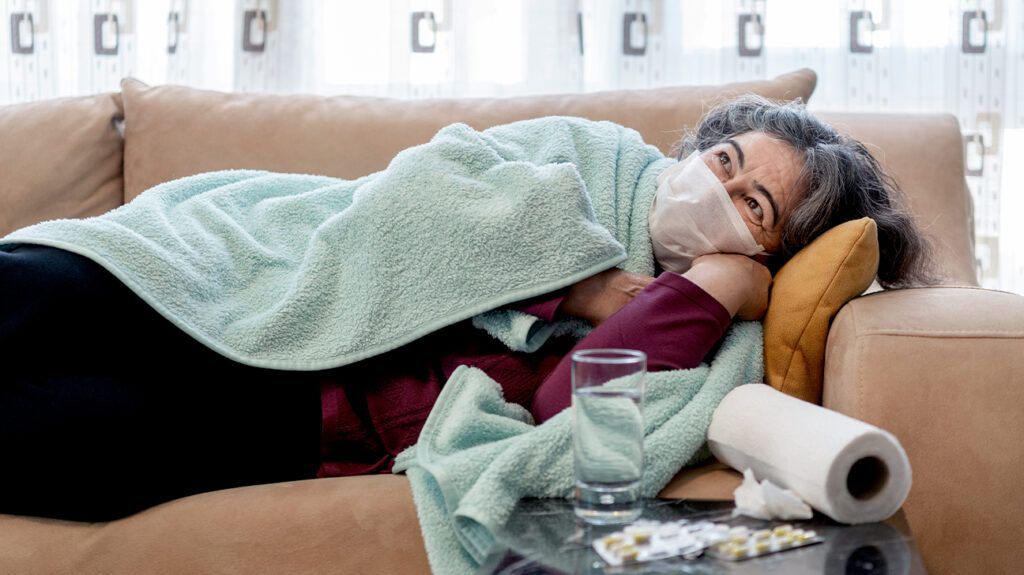Tuberculosis (TB) may last for several months, with treatment. The length of time it takes to cure the condition can vary. It may depend on whether the TB is latent or active.
Tuberculosis (TB) is a bacterial disease that spreads through the air from person to person. The bacterium Mycobacterium tuberculosis causes TB. The disease typically affects the lungs but can spread to other areas of the body. These can include the spine, kidneys, and brain.
Treatment for TB can last for several months. Treatment for active TB may last longer than treatment for latent TB. Some strains of TB are resistant to drugs. Treatment for these strains can take much longer than for regular TB.
This article discusses the types of TB and their treatments. It also looks at multidrug-resistant TB and living with TB.

TB may be latent or active.
Latent TB occurs when a person breathes in TB bacteria but does not become sick. With latent TB, the immune system prevents the bacteria from growing and becoming active.
Latent TB may progress to active TB over time, especially in a person with a weakened immune system. However, in
A person with latent TB:
- does not have TB symptoms
- cannot spread TB bacteria to others
- can develop active TB without treatment
- typically tests positive for TB in a blood or skin test
Active TB occurs when a person breathes in TB bacteria and their immune system cannot stop it from growing.
Some people may develop active TB soon after exposure to the bacteria. For others, the disease may only develop years later.
A person with active TB may experience symptoms including:
- a severe cough that lasts 3 or more weeks
- a cough that produces blood or sputum (phlegm)
- fever
- night sweats
- chest pain
- loss of appetite
- chills
- fatigue
- weakness
- weight loss
Someone with active TB can spread the bacteria to others.
A skin or blood test for TB will typically produce a positive result, as will a sputum culture or smear test. A chest X-ray may also reveal abnormalities.
The length of time it takes to cure TB depends on various factors. Treatment for active TB may take longer than treatment for latent TB.
Active
Treatment for active TB typically lasts 6–12 months. A person will need to take several prescription medications and carefully follow their doctor’s instructions.
Latent
Treatment for latent TB usually lasts 3–9 months. It aims to prevent a person from developing active TB in the future.
Doctors treat latent and active TB with antibiotics.
Antibiotics that doctors prescribe to treat TB include:
- rifampin (Rifadin, Rimactane)
- isoniazid
- ethambutol (Myambutol)
- pyrazinamide
- moxifloxacin
Antibiotic treatment is only effective if a person takes the medication daily for the entire course. A doctor will prescribe antibiotics for between 3 and 12 months, depending on the type and severity of TB.
Discontinuing medication early or not taking it according to a doctor’s instructions may cause TB
Multidrug-resistant TB (MDR-TB) occurs when a person with TB uses TB medication inappropriately. This may be due to:
- a person stopping their treatment too soon
- healthcare professionals incorrectly prescribing antibiotics
- poor-quality antibiotics
- poor healthcare infrastructure
MDR-TB
Doctors may successfully treat MDR-TB with second-line antibiotics. However, second-line treatment options
Additionally, treatment can take much longer for MDR-TB and produce more severe side effects.
People with this drug-resistant form of TB are also at
Treatment and prevention of MDR-TB
The treatment of MDR-TB is complex, and inappropriate treatment
However, doctors will assess the risks and benefits of MDR-TB medications. They may not prescribe them if other treatment options are available.
In 2022, the
- bedaquiline
- pretomanid
- linezolid
- moxifloxacin
The WHO recommends this new regime for people experiencing various types of drug-resistant TB. This all-oral treatment option may help shorten treatment time for MDR-TB.
The most effective way to prevent MDR-TB is for a person to take their medication as their doctor has prescribed it. A person should never stop taking their antibiotics prematurely.
Someone with active TB may spread the bacteria to others. The most effective way for people to prevent the spread of TB is to take their medication correctly.
A person may no longer be able to spread TB bacteria after taking medication for
A person receiving treatment for TB will typically need to attend several appointments with healthcare professionals. Appointments may involve testing to determine whether medications are effective and if a person can still pass the bacteria to others. Tests can include chest X-rays and laboratory analysis of phlegm.
In some cases, a person may require hospitalization. They may be confined to a room with air vents that stop the TB bacteria from spreading.
If a person can spread the bacteria while at home, steps they can take to reduce or avoid the spread include:
- staying at home
- sleeping away from family members and others
- taking medications as their doctor has directed
- always covering their mouth when coughing or laughing
- airing out rooms
Some treatment regimes may require direct observed therapy (DOT). Also, if a person has active TB, the health department may become involved, as it is highly contagious. In these cases, family members and close contacts will also require evaluation.
Treatment for tuberculosis (TB) can last for several months. A person may need to take a combination of antibiotics to treat the disease. Treatment for active TB may last longer than treatment for latent TB.
If a person stops taking their medication prematurely, they may be at risk of developing multidrug-resistant TB (MDR-TB). This form of TB is resistant to first-line TB treatments. MDR-TB requires longer, more toxic, and complex treatment and carries a higher risk of death.
